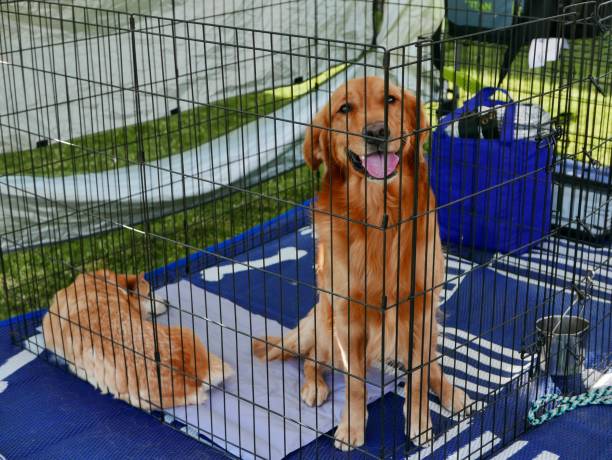Adoption Process Guide
Guide to Pet Adoption: Essential Information for Choosing the Perfect Pet
Adopting a pet is a significant and rewarding decision that brings joy and companionship into your life. However, choosing the perfect pet requires careful consideration and research. This guide provides essential information to help you navigate the pet adoption process and find the ideal companion for your lifestyle and needs.
1. Assess Your Lifestyle and Needs
Evaluate Your Routine: Consider how much time you can dedicate to a pet. Some pets require more attention and exercise than others.
Space Consideration: Assess the size of your living space. Larger pets or those with high activity levels may need more space.
Activity Level: Determine your activity level and choose a pet that matches your energy and exercise habits.
Key Tips:
- Time Commitment: Pets need daily care, attention, and exercise.
- Living Space: Ensure your home can accommodate the pet’s needs and size.
2. Research Different Types of Pets
Pet Types: Research various types of pets (dogs, cats, birds, reptiles, small mammals) to understand their needs, behaviors, and characteristics.
Breed Information: For dogs and cats, research specific breeds to find one that fits your lifestyle. Consider factors like temperament, grooming needs, and health issues.
Key Tips:
- Pet Behavior: Understand the typical behaviors and needs of the pet type you’re interested in.
- Breed Characteristics: Look into breed-specific traits to find a good match.
3. Understand Pet Responsibilities
Daily Care: Be aware of the daily care requirements, including feeding, grooming, and exercise.
Health Care: Learn about the pet’s health care needs, including vaccinations, regular vet visits, and preventive treatments.
Training Needs: Understand the training requirements for your chosen pet and your willingness to commit to training and socialization.
Key Tips:
- Routine: Establish a routine for feeding, exercise, and care.
- Veterinary Care: Budget for regular vet visits and emergencies.
4. Find Reputable Adoption Sources
Shelters and Rescues: Look for local animal shelters and rescue organizations. These places often have a wide range of pets available for adoption.
Breed-Specific Rescues: If you’re interested in a specific breed, check breed-specific rescue organizations that specialize in finding homes for these animals.
Online Resources: Utilize online platforms and databases to search for pets available for adoption.
Key Tips:
- Visit Multiple Places: Visit several shelters or rescues to increase your chances of finding the right pet.
- Ask Questions: Inquire about the pet’s history, behavior, and health.
5. Meet Potential Pets
Initial Visit: Spend time interacting with potential pets to assess their behavior and compatibility with your family.
Behavior Observation: Observe how the pet interacts with you and others. Pay attention to their temperament and energy level.
Family Interaction: If possible, involve all family members in the meeting to ensure everyone is comfortable with the new pet.
Key Tips:
- Multiple Meetings: Consider multiple visits to better understand the pet’s behavior.
- Health Check: Ensure the pet appears healthy and well-adjusted.
6. Complete the Adoption Process
Application Form: Fill out the adoption application with accurate information about your home environment and pet experience.
Interviews and Home Visits: Be prepared for interviews or home visits by adoption agencies to assess your suitability as a pet owner.
Adoption Fee: Pay the adoption fee, which may cover vaccinations, spaying/neutering, and other services.
Key Tips:
- Prepare Documents: Have necessary documents and identification ready.
- Understand Policies: Familiarize yourself with the adoption policies and procedures.
7. Prepare Your Home for the New Pet
Pet-Proofing: Make your home safe by removing hazardous items, securing electrical cords, and ensuring there are no escape routes.
Essential Supplies: Gather essential supplies such as food and water bowls, a bed, toys, and a litter box (for cats).
Designated Area: Set up a designated area where the pet can feel secure and comfortable as they adjust to their new home.
Key Tips:
- Safety First: Ensure your home is safe and welcoming for the new pet.
- Comfort Items: Use familiar items from the shelter to help the pet adjust.
8. Introduce the Pet to Their New Home
Gradual Introduction: Introduce your new pet to their new environment gradually. Allow them to explore one room at a time.
Establish Routine: Create a consistent routine for feeding, exercise, and training to help your pet feel settled.
Positive Reinforcement: Use treats and praise to encourage positive behavior and reinforce a sense of security.
Key Tips:
- Patience: Give your pet time to adjust to their new surroundings.
- Regular Interaction: Spend quality time bonding with your pet.
9. Provide Ongoing Care and Training
Veterinary Care: Schedule a veterinary check-up soon after adoption to address any health concerns and establish a care routine.
Training and Socialization: Continue training and socializing your pet to help them adapt and learn good behavior.
Daily Routine: Maintain a consistent daily routine to provide stability and comfort for your pet.
Key Tips:
- Health Monitoring: Keep track of your pet’s health and address any issues promptly.
- Behavioral Support: Seek professional help if needed for behavioral issues.
10. Build a Strong Bond
Quality Time: Engage in activities that your pet enjoys, such as playtime, walks, or cuddling, to build a strong bond.
Affection and Attention: Show your pet love and attention to reinforce positive behavior and deepen your connection.
Key Tips:
- Interactive Activities: Participate in activities that promote bonding and mental stimulation.
- Positive Interaction: Use positive reinforcement to encourage desired behaviors.
Conclusion
Choosing the perfect pet involves careful consideration of your lifestyle, needs, and the responsibilities of pet ownership. By researching different pets, preparing your home, and following through with proper care and training, you can ensure a successful adoption process and build a lasting, rewarding relationship with your new companion. Remember that patience, preparation, and a commitment to care are essential for a fulfilling pet ownership experience.


